Trip report: Transnistria
Have you ever heard of the country Transnistria?
If not, don’t worry, because you belong to the vast majority. After all, Transnistria is a country that officially does not exist.
Transnistria is a self-declared state with its own government, its own currency, its own army, its own flag, etc, which separated from Moldova in 1991 after the Transnistria War. The country is not recognized by any sovereign country in the world.
Only some other unrecognized countries like South Ossetia, Artsakh and Abkhazia recognize Transnistria and maintain embassies there. The international community (except Russia) regards Transnistria as a separatist part of Moldova.
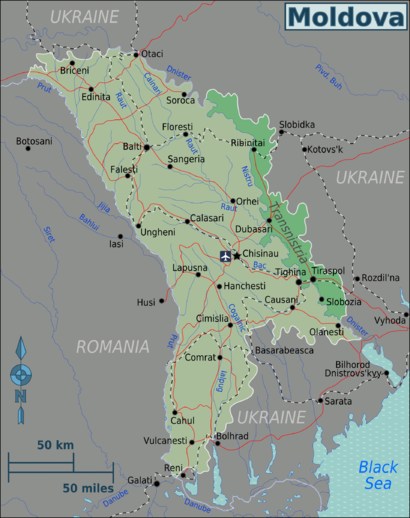
The “country” is a narrow strip trapped between Moldova and Ukraine. In terms of area, Transnistria is slightly larger than Luxembourg. The official name of the country is Pridnestrovian Moldavian Republic. The inhabitants thus call their country Pridnestrovie. The name Transnistria is rarely or not at all used by the locals. Basically it means nothing more than beyond the River Dniester.
The best thing is: as a tourist you can even visit this place. And I wanted to see it with my own eyes. During my three-day trip through Moldova, I did a day trip from Chisinau to the Transnistrian capital Tiraspol.
The journey to Transnistria
Like the day before I am a bit lost at the super-chaotic bus station of Chisinau. This time I am looking for the bus that would take me to Tiraspol, the capital city of Transnistria. Fortunately, the search is a bit faster than yesterday. After I pay 37 lei, about two dollars, I get one of the last seats in the bus.
It is a Mercedes 16 seater and I almost have the worst seat in the bus. I’m sitting in the back left corner, squeezed in. The window is not right next to me, but I have to bend forward if I want to look out. It is also very hot in the bus. And it smells.
There are people in the bus who don’t have a seat at all. The five people who got on only a few seconds after me have to stand. Although the journey only takes an hour and a half, I don’t want to be in their position.
The bus in which I am sitting is called marshrutka in Moldova, which means shared taxi. The day before someone in Moldova told me that these marshrutkas often have accidents. Now that I’m sitting in one myself, I know why. First, the Moldavian roads are in a desolate state. Second, the driver looks back for seconds while driving to collect the missing money from the passengers. I try not to worry about it.
After the driver has raced with maximum speed through the partly curvy roads, we come to the most critical point during this trip: the customs. I read before this trip that bribery is normal at customs and that this is especially true for non-Russian speaking passengers. Several people write on the Internet that they had to pay a kind of “toll” to get into Transnistria.
As Moldova sees Transnistria as its own territory, there are no controls on this site. A few meters later, however, all passengers disembark. In front of me is a man in uniform, to whom I pro-actively stretch the passport. “Registration,” he says emotionlessly and points to a small booth a few meters away.
I’m queuing up, there’s about three more people in front of me. When I hand over my passport to the customs officer, I suddenly hear loud screams and some people storm out of the booth. I turn around and see that our bus drives on! While most of the passengers are already outside, I look helplessly at the customs officer who is studying my passport. The bus is no longer in sight.
That would also be a story, I think. To be stuck at customs between Moldova and Transnistria. Fortunately, only a few seconds later, some of the passengers who ran off without taking their passports back return. A woman, who according to her accent must be French, tells me that the bus crossed the border only a few meters and is waiting for us there.
“Good luck,” says the customs officer who gives me my passport back. In the passport there is a white note, a transit visa. With this transit visa I am entitled to a stay of 10 hours in the whole of Transnistria and not a second longer. At the departure, it is checked whether one has exceeded the time. I don’t know what happens when you do that, but I honestly don’t want to find out.
A few hours in Tiraspol
Tiraspol is the capital of Transnistria. With 130’000 inhabitants it is the largest city of the de facto state. It is also the second largest city in Moldova, if one considers Transnistria as part of the country. Nevertheless, it is rather a small town whose sights can be seen in half a day.
From the train station, where the buses stop, it takes about ten minutes on foot to get to the city center. On the way to the center I pass the factory of the only worldwide known product from Transnistria: Kvint! This cognac is produced here in Tiraspol and exported all over the world.
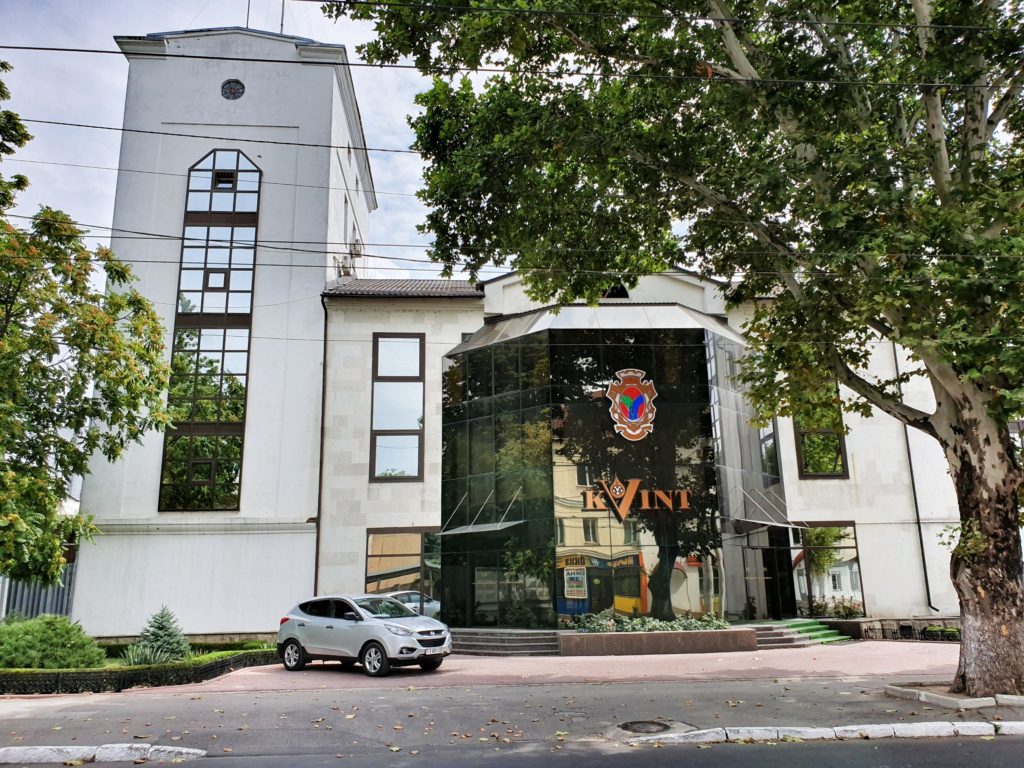
But I didn’t come to Tiraspol to drink cognac, but to explore the city. What I immediately notice in the city center is how quiet it is. Although it is Saturday and the sun is shining, there are only a few people on the street.
To say that Tiraspol is a beautiful city would be a massive overstatement. Transnistria was a member of the Soviet Union as part of Moldova. Funnily enough, it seems that Transnistria has not yet left that time behind. Unsurprisingly, Transnistria is often called the last existing state of the Soviet Union therefore.
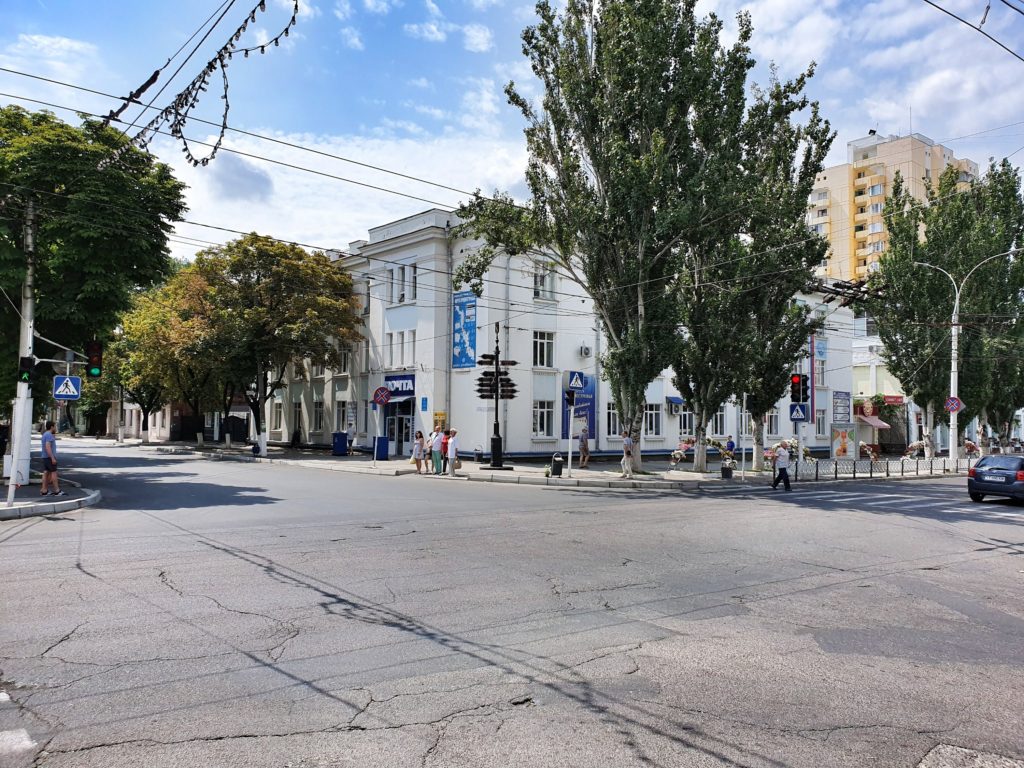
The buildings are in typical communist style, grey or brown and many look in need of renovation. If the sky wasn’t bright blue, it would look incredibly dull. Just like the houses, the streets are in a rather bad condition as well. However, this is what makes Tiraspol or Transnistria in general an interesting travel destination. It feels like traveling back in time twenty or thirty years. In other words: it has charm here in its own way.
It doesn’t take long until I walk past one of the three sights that I considered worth seeing before the trip. The House of Soviets is a Stalinist Empire style building with a grim looking Lenin statue in front of it. I still don’t know what exactly the function of the building is, but it definitely looks interesting.
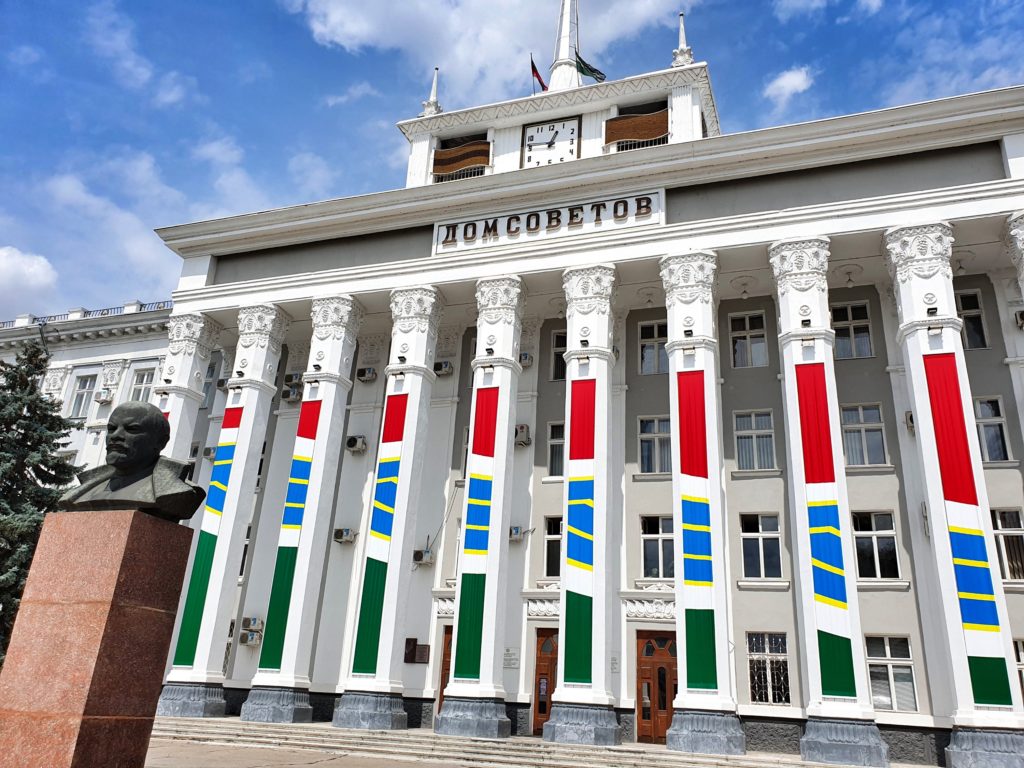
Since I don’t have local currency yet, I’m looking for a bank next. When I ask how much Moldovan lei I should change if I want to eat something and have a cup of coffee afterwards, the bank employee recommends 200 lei, equivalent to about 10 dollars. Moldova is one of the cheapest countries in Europe and Transnistria seems to have the same price level.
As I have already mentioned, Transnistria has its own currency, the Transnistrian ruble. It is funny, however, that besides notes and normal coins, plastic coins are also used. These plastic coins are not as common as the notes and normal coins. Since I read about the plastic money before this trip and find it fascinating, I buy some of them in the bank as a souvenir.
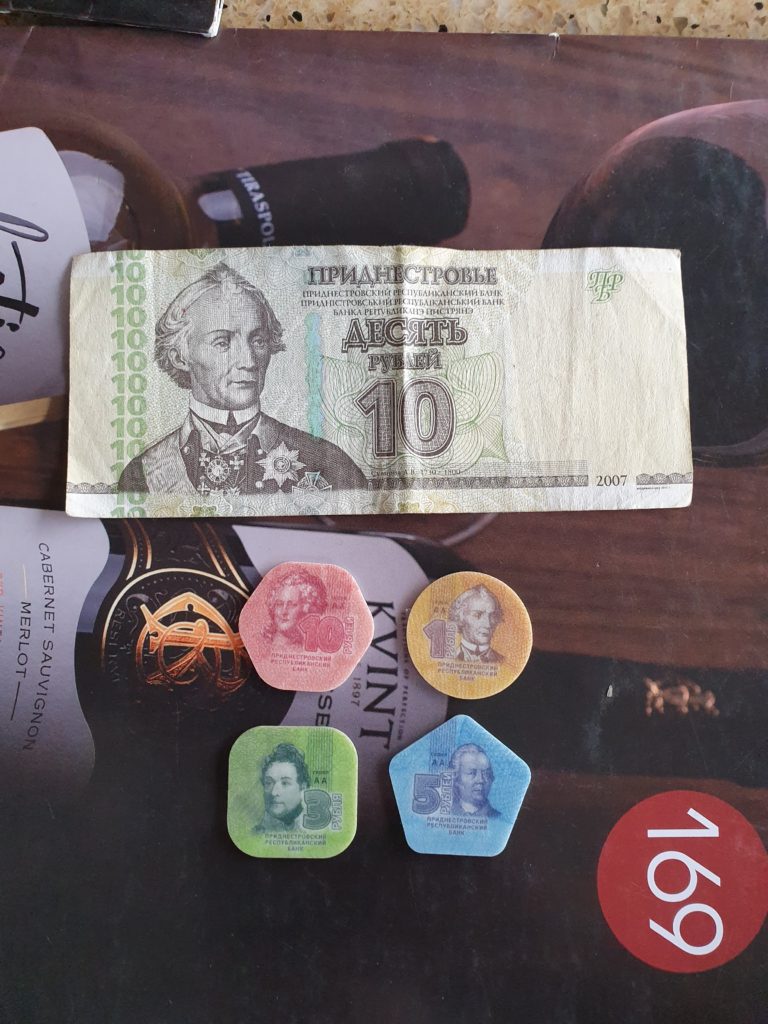
I have to say that not only the bank employee but all the people I met in Transnistria were very nice and helpful. I found the level of English surprisingly good. Better than in Moldova anyway. Maybe I was just lucky because I only spoke to about five or six people. But all of them could speak English very well.
Before I spend my ruble, I continue my tour through Tiraspol. Above all I wanted to see the two other sights. On the one hand the tank monument and on the other hand a gigantic statue of Lenin. As clouds are coming up and the sky slowly changes from blue to grey, I have to hurry.
The way to these two sights leads me along several ugly houses and other, a little bit bizarre buildings. One of them is a disco with a maximum retro factor. Unfortunately, you cannot take your firearms with you, so it says at least at the sign of the door.
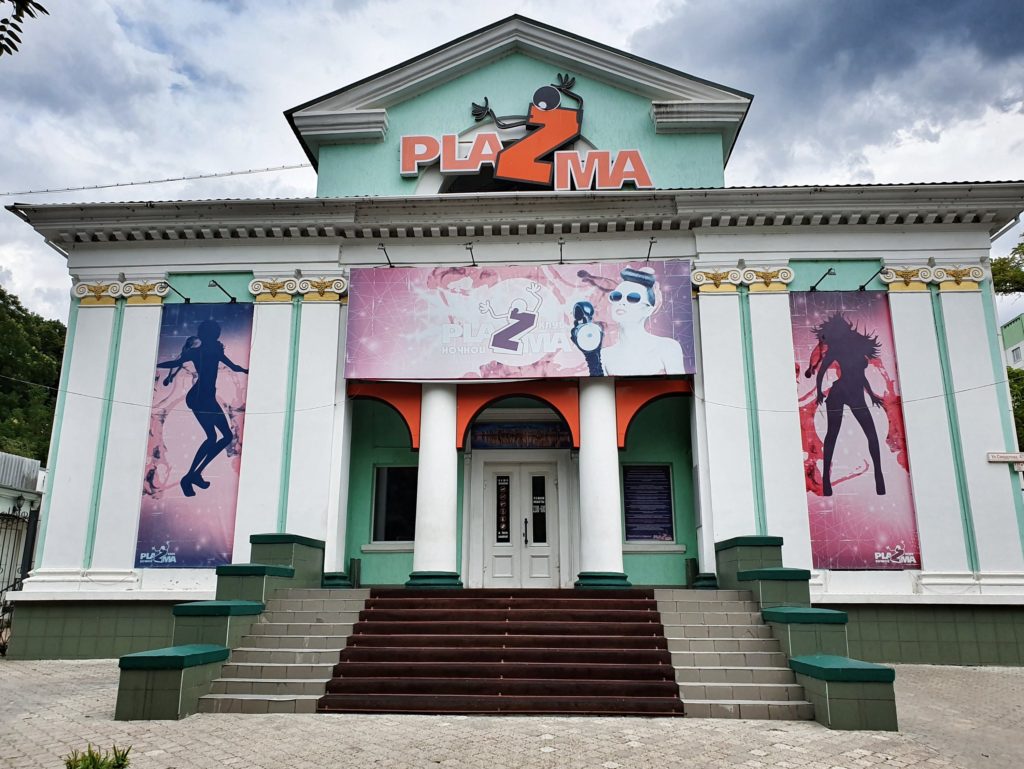
Besides, I’m passing a hotel. In fact, before I left I thought about spending the night in Transnistria. However, I would have had to register in Tiraspol because my transit visa was only valid for ten hours. That was too much effort for me.
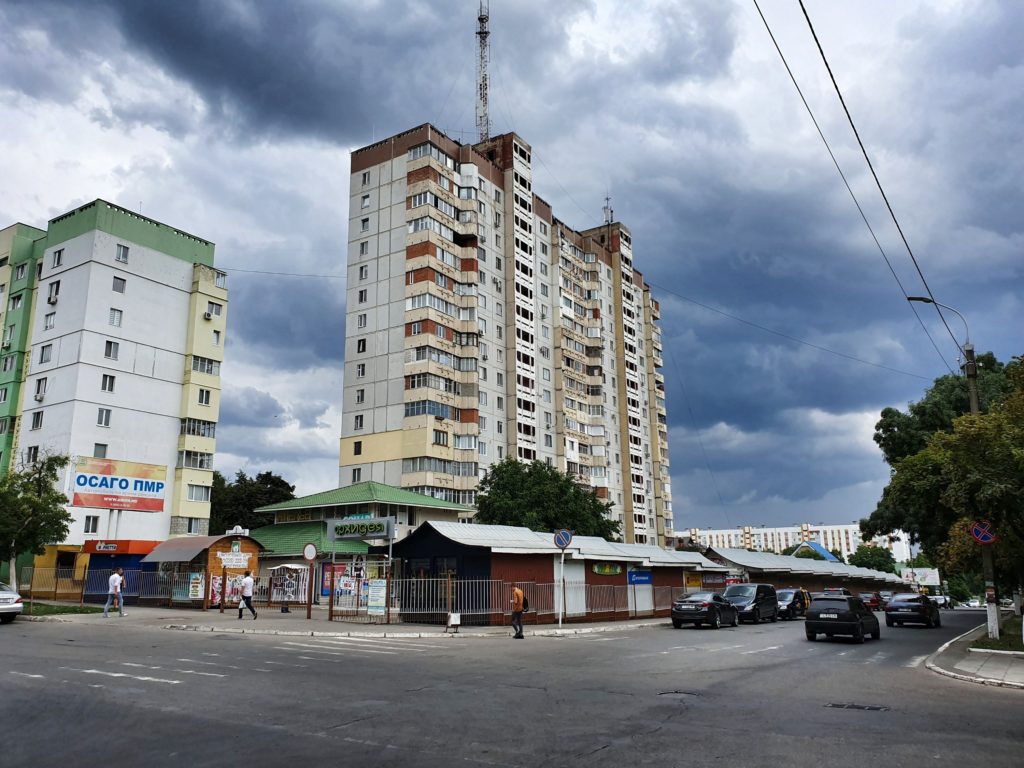
The sky has already taken on a very threatening color, so that I am glad that I arrive just in time at the tank next to an Orthodox church. It is not the first time that I have seen tanks in former Soviet Union countries. In Tiraspol you can even climb up.
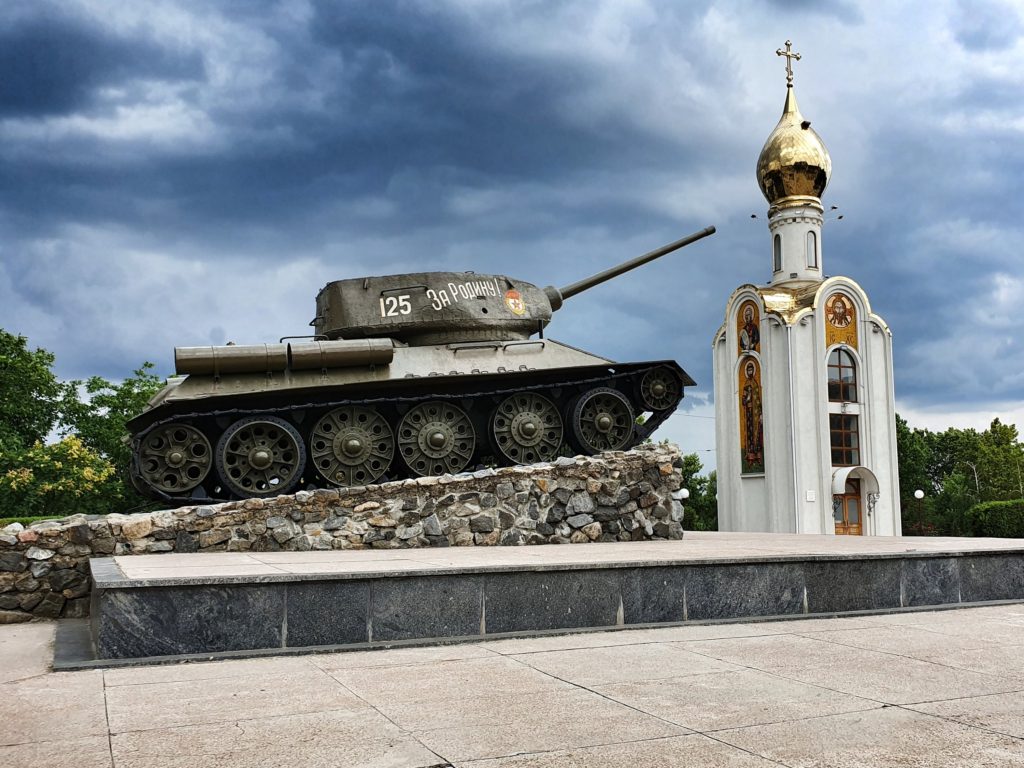
The tank is part of the Memorial of Glory, where veterans and dead soldiers of various wars are commemorated. On pictures I have seen that in Tiraspol there are occasionally military parades, where tanks roll through the streets and thousands of people cheer. Something like this is also typical for countries of the former Soviet Union. In most countries in Western Europe such parades would be unthinkable.
Not far from the Memorial of Glory is the third sight I wanted to see. It is a big Lenin statue in front of Tiraspol’s Supreme Council. Not too long ago it was apparently against the law to take photos of the tank and the Lenin statues. Those who were caught were punished with fines or worse. Fortunately, that doesn’t seem to be a problem any more today.
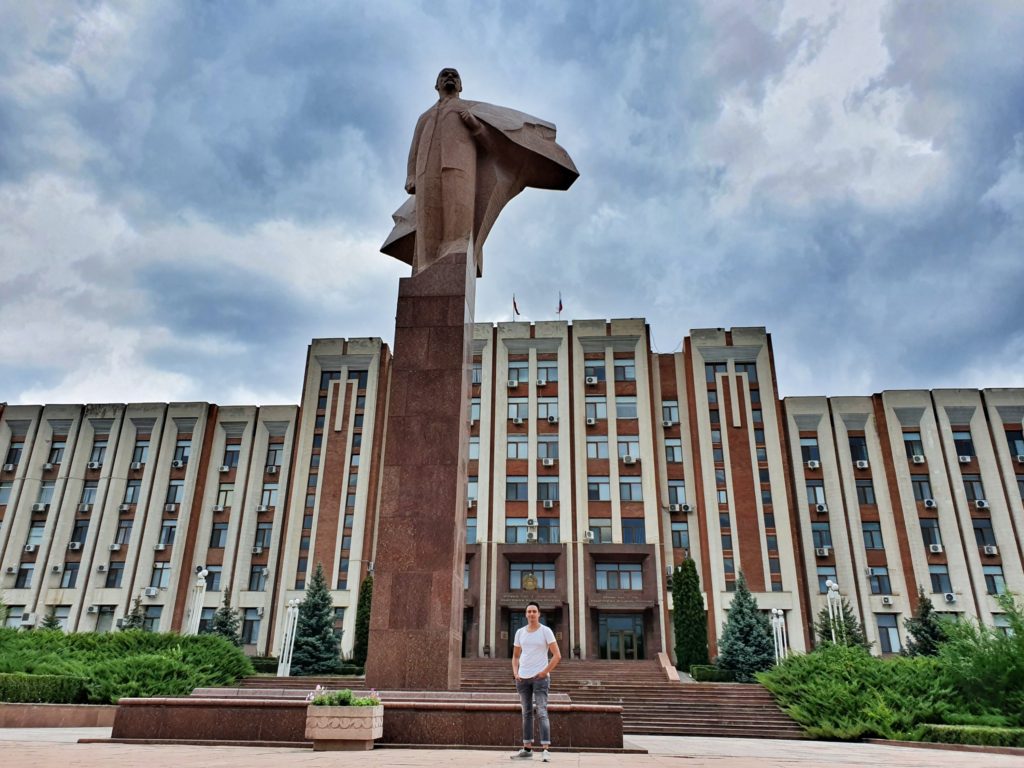
My timing was good, because the first raindrops appear. As I walk towards a restaurant, I pass a line of flags. The biggest two are the Transnistrian and the Russian one. I also see hammer and sickle on different occasions. It fits very well to the cityscape of Tiraspol.
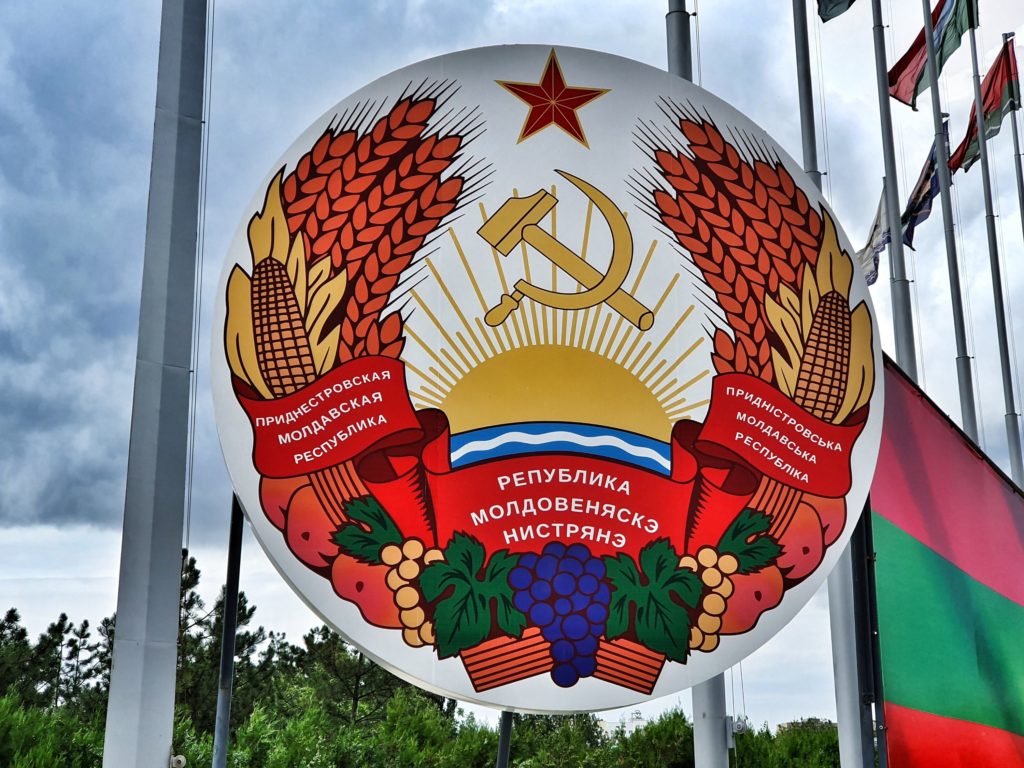
In two hours, the last bus leaves for Chisinau. I am thinking about going to Bender, another city in Transnistria. There I could see the fortress, one of the most popular sights in Transnistria. However, after waiting a quarter of an hour at the wrong bus station, I reject this plan again. It would have been too short of time.
So I spend my last time on the terrace of a café and watch what happens around me in this special city. A short time later I sit again in a marshrutka with 20 other people. With wild Russian sound we drive back on the bumpy roads to Moldova. There are no customs checks this time.
Is Transnistria worth the trip?
Transnistria is probably the strangest place to visit in Europe. The unrecognized country offers a journey back to long forgotten times and lets the Soviet Union live on, while the other former members have evolved and modernized.
For this reason alone, a trip is worthwhile. Although Tiraspol is neither beautiful nor does the city offer a multitude of sights, the capital of Transnistria is a unique place in Europe. It is, as I have already written, a journey back in time when Lenin is still alive.
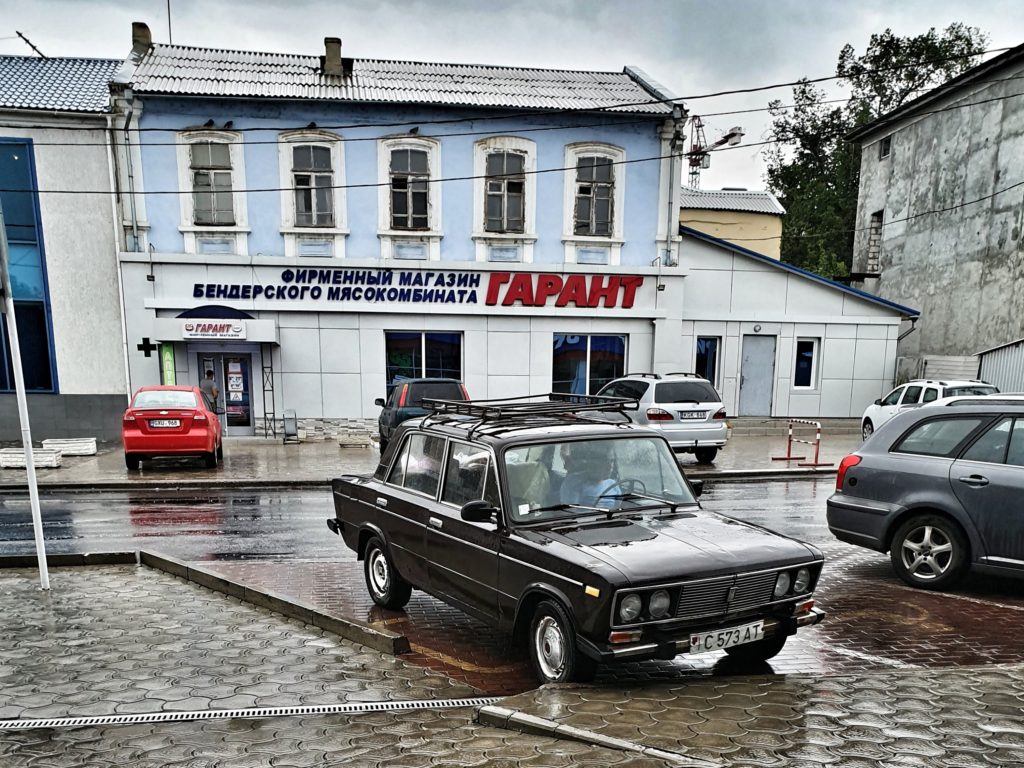
What also speaks for a trip to Transnistria are the reasonable prices, the nice people and the rather easy, but adventurous way to get there. Finding your bus at the bus station in Chisinau is probably the most difficult part of the journey. The days of getting scammed at customs seem to be over.
The trip to Transnistria costs only about 2 dollars per way. A few hours are enough to see everything in Tiraspol. It would even give you time to visit Bender fortress. In Tiraspol, you don’t need more than 20 dollars, unless you want to go cognac tasting or having booze in one of the cafés or bars.
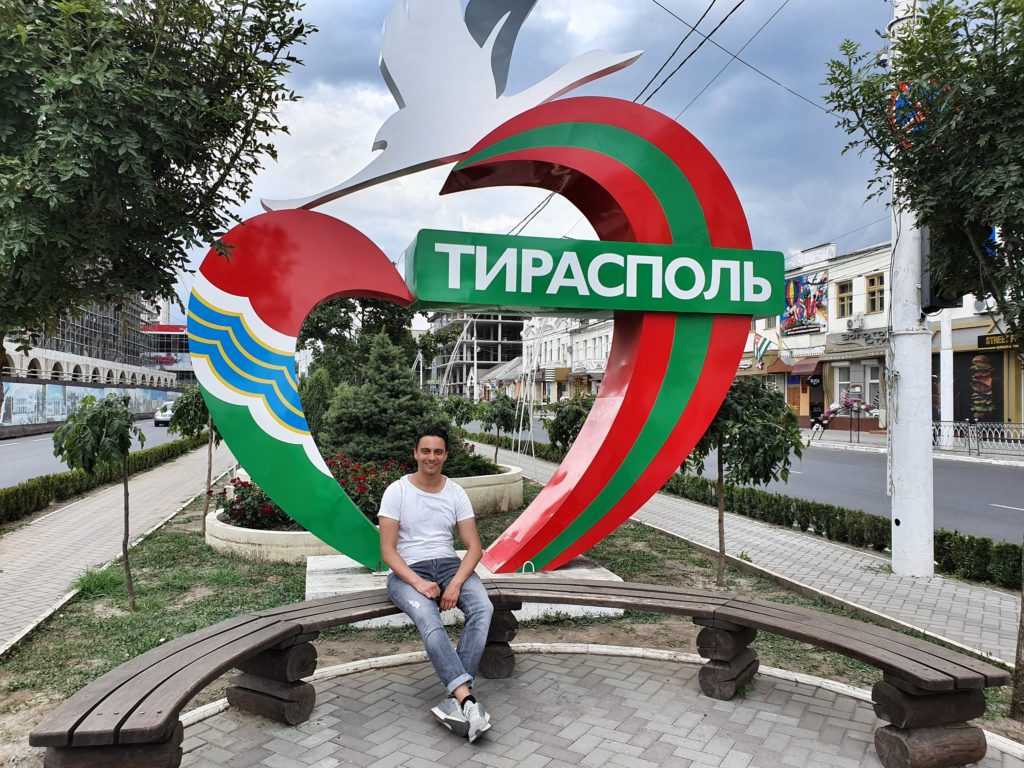
Visitors get the visa at the border. Don’t loose the piece of paper! In fact, I lost it and had to go to the ministry of immigration to get a new one. Fortunately, a local helped me with that. Otherwise, it would have been a difficult undertaking to get a new one without speaking any Russian.
It goes without saying that Transnistria is a destination with a “special interest” label. If you want to go there, you have to know what awaits you there. This place is really off the beaten path and I haven’t seen any other tourist in Tiraspol. But it’s actually quite fun and worth the trip.
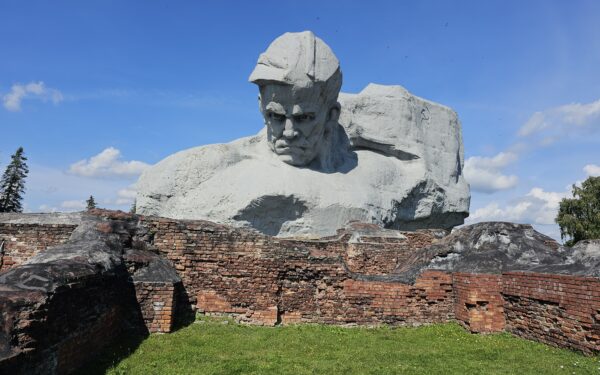
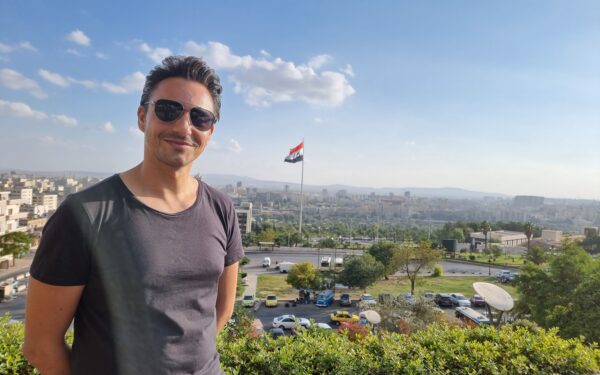
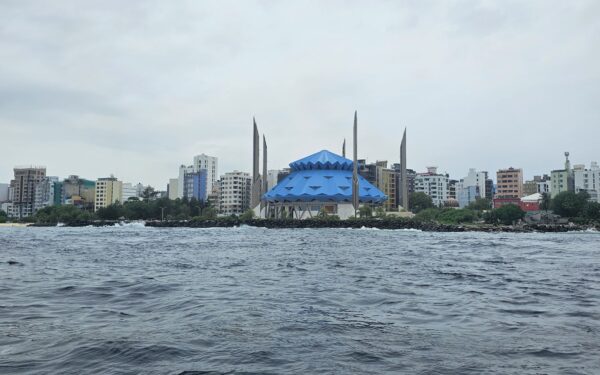
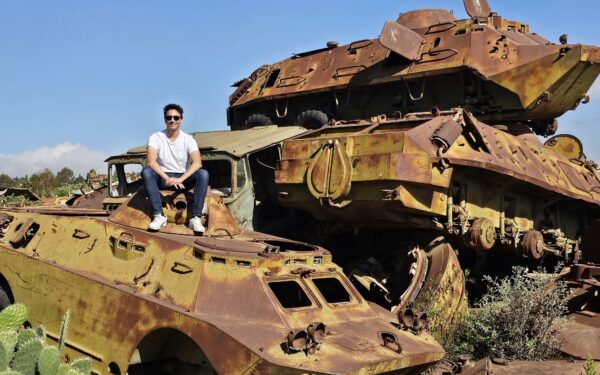
I love the plastic coins!!! They look amazing!!! 😀 Such a fun place. I heard of not-real states before, but they are usually pretty small! This one is a real city! I wonder what does the official Government think about it…
yes, Transnistria is bigger than many think. It’s actually bigger than Luxembourg. 🙂